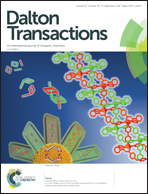Sol–gel-derived transparent silica–(Gd,Pr)PO4 glass-ceramic narrow-band UVB phosphors
Abstract
Silica-based monolithic transparent glass-ceramics containing (Gd,Pr)PO4 orthophosphate nanocrystals, prepared by a cosolvent-free sol–gel method, efficiently emit narrow-band ultraviolet B (UVB) photoluminescence (PL) at ∼313 nm from the 6P7/2 → 8S7/2 transition of Gd3+ ions upon excitation into the 4f–5d transition of Pr3+ ions. The formation of (Gd,Pr)PO4 nanocrystals as small as ∼5–10 nm facilitates energy transfer between rare-earth (RE) ions while avoiding optical loss by Rayleigh scattering. Unlike conventional phosphors, the aggregation of Gd3+ ions causes no concentration quenching, and the incorporation of inert RE ions to block energy transfer, such as La3+ and Y3+ ions, is unnecessary. A glass-ceramic with a Pr3+ ion fraction of 0.02 exhibited the maximum internal and external PL quantum efficiencies of ∼0.98 and ∼0.91, respectively, under excitation at 220 nm.



 Please wait while we load your content...
Please wait while we load your content...